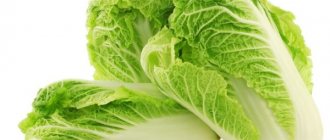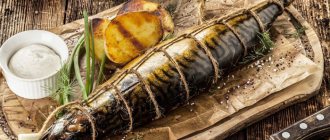The low calorie content of oyster mushrooms makes them a particularly valuable product for any diet. Find out the energy value of boiled, fried and dried mushrooms and include dishes from them in your menu to benefit your figure!
Author: Kristina Lobanovskaya, doctor, practicing nutritionist Article updated: 11/09/2020
Oyster mushroom is a common type of wild and cultivated mushrooms that have delicate pulp and an original taste that harmoniously combines the aroma of rye bread with notes of anise. The low calorie content of oyster mushrooms, along with a lot of beneficial properties, high nutritional value and ease of preparation, allows it to be used as a healthy alternative to more expensive mushrooms and dietary meat. The energy value of fresh oyster mushrooms is 43 kcal per 100 grams, and 1 medium-sized piece weighing 40 g contains 17.5 kcal. During the preparation process by salting or pickling, the calorie content of the product is reduced by almost half, and in prepared dishes this indicator depends on other components used.
Fresh oyster mushrooms: calorie content per 100 grams, nutritional value, vitamins, minerals
The calorie content of fresh oyster mushrooms per 100 grams is 32.3 kcal. 100 g of product contains:
- proteins – 3.2 g;
- fats – 0.4 g;
- carbohydrates – 3.7 g.
Read: Calorie content of fried boletus mushrooms
The composition of 100 g of fresh oyster mushrooms includes the following vitamins and minerals (in brackets, % of substances from the daily value of an adult):
- B1 (8.2);
- B2 (19);
- B4 (9.5);
- B5 (25);
- B6 (5.4);
- B9 (9.3);
- D (6.9);
- N (22);
- RR (24);
- potassium (17);
- magnesium (4.4);
- sodium (1.4);
- phosphorus (15);
- iron (7.2);
- manganese (5.5);
- copper (24);
- molybdenum (17);
- selenium (4.6);
- chromium (25);
- zinc (6.3).
Mushroom composition
The physiological value of fresh oyster mushrooms is enormous.
Mushrooms contain everything the human body needs: proteins, fats, vitamins and amino acids. Accurate indicators of microelements:
- 148 g (according to American studies of the properties of these mushrooms) contains 11% of the daily intake of iron;
- One mushroom contains 18% (approximately 178 mg) of the norm for phosphorus, zinc, and potassium for humans; they also contain magnesium, manganese, sodium, and selenium;
- The composition necessarily contains B vitamins: B1, B2 and D2, ordinary and chitinous fiber. They provide certain benefits to the functioning of the body.
Fried oyster mushrooms: calorie content per 100 grams, bju
Calorie content of fried oyster mushrooms with onions per 100 grams is 76 kcal. 100 g of dish contains:
- proteins – 2.28 g;
- fats – 4.43 g;
- carbohydrates – 6.97 g.
Steps for preparing fried oyster mushrooms:
- 1.5 kg of fresh mushrooms, washed well, dried, cut into medium-sized pieces;
- finely chop 300 g of onion;
- fry the mushrooms in vegetable oil over low heat for 15 minutes;
- add onion and salt to taste to the fried oyster mushrooms, mix the ingredients of the dish;
- fry onions and mushrooms over medium heat for 5 minutes.
Side effects
Although oyster mushrooms are generally considered a safe food, they can sometimes cause allergic reactions. On the other hand, overuse of mushrooms can lead to stomach upset.
Like other mushrooms, oyster mushrooms very easily absorb carcinogens from the air and soil. Therefore, it is important to know in which area the mushrooms grew. Otherwise, instead of useful components, they will be “enriched” with heavy metals and toxic substances. This product is especially dangerous for pregnant women, children, the elderly and sick people.
Stewed oyster mushrooms: calorie content per 100 grams, bju
Calorie content of stewed oyster mushrooms per 100 grams is 29 kcal. 100 g of dish contains:
- proteins – 1.29 g;
- fats – 1.1 g;
- carbohydrates – 3.6 g.
Recipe for stewed oyster mushrooms:
- thoroughly rinse and peel 1 kg of mushrooms;
- pour oyster mushrooms into 1 liter of water, bring the water to a boil, drain the liquid, pour in new water, also boil and drain;
- cut boiled oyster mushrooms into small pieces;
- grate 100 g of fresh carrots on a medium-sized grater, finely chop 100 g of onions;
- Mix onions and carrots with mushrooms, add salt to taste to the resulting mixture, and simmer the oyster mushrooms for 15 minutes.
Where do they grow?
Novice mushroom pickers especially love to collect this type of mushroom, since it can be found almost everywhere, namely:
- Broad-leaved forests.
- Parks.
- Plains.
- Edges of roads.
- Mountain landscape.
- Coniferous forests (rare).
You can find the desired trophy on dried trees or stumps. This species especially loves poplar and mulberry.
Often the mushroom climbs to a considerable height from the ground. Lovers of quiet hunting sometimes have to get creative to get to their cherished goal.
The species begins to bear fruit from September to the end of November. If the weather is favorable, the season may last until early December.
Boiled oyster mushrooms: calorie content per 100 grams, nutritional value
The calorie content of boiled oyster mushrooms per 100 grams is 34.8 kcal. 100 g of such mushrooms contains:
- proteins – 3.4 g;
- fats – 0.42 g;
- carbohydrates – 6.18 g.
Read: Boletus calorie content per 100 grams
Boiled oyster mushrooms retain most of their beneficial properties with short heat treatment. Due to their low fat content and calorie content, such mushrooms can be included in the diet in almost any health diet.
The nutritional value
The uniqueness of oyster mushrooms lies in the fact that it contains almost all the substances necessary for humans - vitamins, minerals, proteins, fats, carbohydrates. At the same time, it has a low calorie content, but can satisfy hunger even with a small portion, which makes dishes made from it a very useful and even indispensable component of low-calorie diets. Their use not only allows you to avoid debilitating feelings of hunger and prevent breakdowns, but also saturates the blood with valuable elements, making the diet less stressful for the body.
Proteins fats carbohydrates
The amount of BJU in 100 grams of fresh oyster mushroom with a calorie value of 43 kcal is in the following ratio:
- proteins - 3.3 g (13 kcal);
- fat - 0.4 g (4 kcal), of which 0.02 g saturated fatty acids;
- carbohydrates - 4.2 g (17 kcal), including 1.11 g of mono- and disaccharides, 2.3 g of dietary fiber.
In 100 g of boiled oyster mushrooms with a calorie content of 50 kcal, the BJU content increases slightly:
- proteins - 3.4 g;
- fat - 0.42 g;
- carbohydrates - 6.18 g.
In 100 g of dried oyster mushrooms with a calorie content of 327 kcal, the amount and ratio of BZHU is completely different:
- proteins - 34.0 g;
- fat - 0.5 g;
- carbohydrates - 6.0 g.
100 g of pickled oyster mushrooms with a calorie content of 23 kcal contains:
- proteins - 1.0 g (4 kcal);
- fat - 1.5 g (14 kcal);
- carbohydrates - 0 g.
100 g of fried oyster mushrooms with a calorie content of 76 kcal contains:
- proteins - 2.28 g;
- fat – 4.43 g;
- carbohydrates - 6.97 g.
100 g of stewed oyster mushrooms contain 29 kcal calories (without sour cream):
- proteins - 1.29 g;
- fat – 1.1 g;
- carbohydrates – 3.6 g.
Like all mushrooms, representatives of the oyster mushroom family are sources of vegetable protein, the content of which is close to that of vegetable crops, but exceeds them in the amount of healthy fats and complex carbohydrates. Due to the presence of proteins and a significant portion of the amino acids necessary for humans, oyster mushroom dishes help accelerate recovery processes, strengthen the immune system and normal exercise tolerance.
Macro- and microelements
The biochemical composition of the oyster mushroom family is replete with minerals and valuable substances that play a significant role in maintaining the normal functioning of the body. The fiber they contain is an important, often underestimated, beneficial component of a healthy diet, but it may best prevent the hunger pangs that come with a low-calorie diet. The classic human diet is usually poor in fiber, and one serving of oyster mushrooms is enough to satisfy one third of the daily requirement. Therefore, such dishes saturate well, even with minimal calorie content.
According to American scientists, oyster mushrooms can replace many animal and plant sources of micro- and macroelements, in particular phosphorus, zinc, potassium, and iron. These and other beneficial substances have a number of positive effects on health:
- potassium - present in any intracellular fluid, ensures the normal functioning of soft tissues (vessels, endocrine glands, muscles, etc.), participates in the regulation of water balance, normalizes heart rhythm, promotes the conduction of nerve impulses, supports the functions of magnesium;
- magnesium - ensures the effective functioning of nerves and muscles, participates in the conversion of glucose into energy, prevents the formation of calcium deposits, prevents the formation of stones in the gall bladder and kidneys, normalizes the activity of the cardiac, vascular and endocrine systems;
- zinc - activates many enzymatic reactions, normalizes the processes of growth and puberty, supports the immune system, promotes protein synthesis, improves prostate function in men and the production of male sex hormones;
- iron is an important component of hemoglobin, responsible for the capture and transport of oxygen by red blood cells to all internal organs, ensures respiratory processes in cells, helps the immune system resist aggressive environmental influences;
- phosphorus is one of the main useful elements of DNA and RNA, participates in the transport of energy, regulates hormones, normalizes digestion, liver and brain function;
- selenium - increases immunity, reduces the risk of developing malignant and benign tumors, stimulates metabolic processes, activates the formation of red blood cells and proteins, and prevents the formation of free radicals;
- manganese - improves cell development, promotes the absorption of iron, copper and vitamins, ensuring hematopoiesis, cell development and bone structure formation;
- copper - participates in the formation of enzymes and proteins, accumulates in the blood, brain, liver, kidneys, muscle and bone tissue, therefore, if it is deficient, the functioning of these vital organs is disrupted;
- sodium - improves water-salt metabolism, improves the functions of the salivary and pancreas, activates the production of gastric juice, maintains the osmotic concentration of the blood;
- Calcium has a beneficial effect on teeth and bones, is directly involved in the process of excitability of nerves and contractility of muscle tissue, and normalizes blood clotting.
Oyster mushrooms are also rich in enzymes that are useful for weight loss, promoting the breakdown of lipids and glycogen. In addition, with regular consumption of such a product, the level of “bad” cholesterol is reduced and the development of E. coli is suppressed.
Vitamins
In terms of the set of vitamins, oyster mushroom is similar to meat, and in terms of the content of some of them it is considered the most useful mushroom. The main value in the composition are the following vitamins:
- B1 - necessary for maintaining the proper functioning of the heart, nervous system and digestion, helps with skin lesions of a nervous nature, increases brain activity and mental abilities, eliminates depression and other mental illnesses;
- B2 - participates in tissue respiration, promotes energy production, normalizes the reproduction of stress hormones during constant nervous overload, protects the nervous system as a whole;
- B3 (PP) - controls a number of biochemical processes, participates in the formation of enzymes for cellular respiration, stimulates the metabolism of fats, proteins and carbohydrates, improves brain function, and ensures full vision;
- B4 - prevents central nervous system disorders, is a hepatoprotector, prevents the development of cholelithiasis, eliminates the effects of harmful effects on tissues of toxins of alcohol, drugs and medications;
- B5 - participates in lipid metabolism, cell development and renewal, production of hormones by the adrenal glands, formation of red blood cells and amino acids, accelerates wound healing, increases the absorption of other vitamins, and directly affects the condition of hair;
- B6 - prevents nervous disorders and skin diseases on this basis, normalizes the synthesis of nucleic acids, relieves nighttime muscle spasms, cramps, numbness and neuritis of the extremities, produces a diuretic effect;
- B9 - “vitamin of good mood”, promotes the production of “happiness” hormones, supplies carbon for the production of hemoglobin, accelerates cell division and the development of all tissues, maintains a healthy heart and blood vessels, has a beneficial effect on hematopoiesis and the functionality of leukocytes (“combat” units of immunity ), strengthens the health of the liver and digestive system as a whole;
- A - antioxidant, an active participant in redox reactions and protein synthesis processes, normalizes metabolism and the functions of cell membranes, strengthens bones and teeth, helps maintain vision, slows down aging;
- beta carotene is a powerful immunomodulator and supplier of vitamin A, into which it is converted under the influence of certain enzymes in the body - from 1 molecule of beta carotene 2 molecules of vitamin A are obtained.
In the human body, under the influence of unfavorable environmental conditions or infections and lymphocytes fighting them, free radicals are constantly formed. An excess of these harmful compounds poses a great danger to human health, since they destroy cells and lead to accelerated aging of the body. To protect against free radicals, antioxidants are used, which are synthesized by the body, but not always in sufficient quantities, so they must come from food. Oyster mushroom is considered one of the richest sources of such beneficial substances. Regular consumption of such mushrooms, even in moderate quantities, helps strengthen the immune defense, increase the effectiveness of the fight against infectious agents and adverse environmental influences, as well as stress and its consequences.
In general, excellent taste, versatility in culinary processing, rich vitamin and mineral composition, maximum beneficial properties, minimum contraindications and low calorie content of oyster mushroom make it an indispensable component of both regular and many dietary diets. Dishes made from it are widely used during periods of weight loss or recovery, as well as in daily nutrition and in holiday menus. The main thing is that oyster mushrooms are consumed in moderation and always after careful heat treatment. There is simply no other way to eat these mushrooms.
Benefits of oyster mushrooms
The beneficial properties of oyster mushrooms include:
- the product reduces the level of bad cholesterol in the blood and prevents atherosclerosis;
- with regular consumption of mushrooms, the body’s immune functions are activated;
- Oyster mushroom protein is a good alternative to animal protein, which is important for people switching to a vegetarian diet;
Read: Calorie content of boiled chanterelles
- B vitamins of mushrooms are useful for maintaining the health of the nervous, cardiac, and vascular systems of the body;
- Oyster mushrooms have pronounced antioxidant properties and have an antibacterial effect;
- Studies have shown that an extract prepared from mushrooms reduces the rate of progression of oncology of the large intestine and mammary glands. An extract from oyster mushroom mycelium prevents the development of staphylococcus and E. coli;
- due to the presence of potassium, mushrooms regulate blood pressure;
- oyster mushrooms are rich in iron, which is necessary to prevent anemia;
- the fiber in the product ensures active removal of toxins and waste from the body and helps get rid of constipation;
- Oyster mushrooms reduce the acidity of gastric juice.
Composition and beneficial properties
Fans of mushroom dishes can say with confidence that oyster mushrooms are an incredibly nutritious and satisfying product. Despite the fact that the composition of the species is closer to vegetables than to meat, its value for humans is colossal. The beneficial properties include high nutritional value and the ability to completely cover the need for carbohydrates and minerals if you include mushroom pulp in your daily menu.
Composition of oyster mushrooms
It is worth highlighting the composition separately. It is rich and varied.
Vitamins:
- A.
- B1.
- B2.
- B3.
- Pantothenic acid.
- Folic acid.
- Choline.
- Calciferol.
- C.
- PP.
- Polyunsaturated acids.
Macronutrients:
- Calcium.
- Phosphorus.
- Potassium.
- Sodium.
- Cobalt.
Many people do not know how much oyster mushrooms they can eat per day to maintain good health. Doctors recommend consuming no more than 200 grams per day.
Microelements:
- Manganese.
- Iron.
- Zinc.
- Selenium.
- Copper.
Oyster mushrooms contain statin substances. Their regular intake into the human body reduces cholesterol levels naturally. The product can be an excellent addition to the main treatment for diseases of the thyroid, pancreas, and liver.
Contents of BJU (proteins, fats, carbohydrates) per 100 grams of finished product:
- Proteins - 3.3 grams.
- Fats - 0.4 grams.
- Carbohydrates - 3.8 grams.
KBJU (calories) of oyster mushrooms - 33 kcal per 100 grams of finished product.
The nutritional value of the product is quite high. That is why the mushroom is especially often used in vegetarian cuisine.
How are oyster mushrooms beneficial for the human body?
The benefits of these mushrooms are often underestimated.
- Contain more than 20 types of amino acids.
- They have antiviral and bactericidal properties.
- Lower blood pressure.
- Improve metabolism.
- Helps with helminthiasis.
- Normalize blood sugar levels.
- Slow down the development of atherosclerosis.
- Helps improve vision.
Chitin contained in the fruiting body is difficult to digest. The product is recommended to be eaten in crushed form.
Harm of oyster mushrooms
Contraindications to the use of oyster mushrooms are:
- despite the many beneficial properties, the possibility of including mushrooms in the diet must be agreed with the attending physician during pregnancy and breastfeeding;
- Some people experience individual intolerance to mushrooms;
- salted and pickled oyster mushrooms are contraindicated in case of swelling, chronic and aggravated diseases of the pancreas, stomach, intestines, kidneys, liver, gall bladder;
Read: Calorie content of frozen butter
- mushrooms collected in contaminated areas are saturated with toxic substances that can cause severe food poisoning;
- The product's fiber is rich in chitin, which is difficult to digest. To make mushrooms a less heavy food, you should chop them into small pieces before cooking;
- Contraindication to the use of oyster mushrooms is childhood.
Storage
Mushrooms are a perishable product, including oyster mushrooms. Good ventilation is important for them. Products should not be sealed in a plastic bag. They are placed in the refrigerator at a temperature of -2 degrees. Under these storage conditions, mushrooms retain their taste and aroma.
It is best to store oyster mushrooms in the freezer. This preserves their taste. Freezing extends the shelf life to 4 months. If you boil them before freezing, the product can be placed in the freezer for six months. Canned products can be stored for up to 1 year, but in a cool place. In the store, you need to choose only high-quality oyster mushrooms that do not have dark spots, mucus or an unpleasant odor.
Recipes for medicines with oyster mushrooms
In folk medicine, many recipes based on oyster mushrooms have been collected to maintain health and treat certain diseases.
Tincture for the treatment of mastopathy
Pour oyster mushrooms (600 g) with alcohol or vodka (1 l) and leave in a cool, dark place for 10 days. Take 1 tbsp of the finished product. l. once a day before meals. It is recommended to continue using the tincture for 14 days for preventive purposes, and for a month for medicinal purposes.
Elixir to strengthen the immune system and prevent problems related to oncology
Pour 100 g of fresh oyster mushrooms with 0.5 liters of alcohol. Leave for 7 days in a dark place. Should be taken 1 tsp. composition, diluted in 50 ml of water, three times a day 15 minutes before meals. The duration of the course is 10–14 days.
Wine remedy for strengthening the nervous system and insomnia
Pour 50 g of fresh mushrooms into 750 ml of strong wine (preferably Cahors), leave for a week. It is recommended to drink 30 ml of the finished product before bed for 2–4 weeks.
Oatmeal recipes:
Drinking juice to relieve gastritis symptoms
Take 1 tbsp. l. oyster mushroom juice before meals up to 3 times a day until pain decreases.
Before using the products discussed, it is recommended to consult a doctor.
How to cook?
You can prepare many dishes from oyster mushrooms. This product perfectly complements soups, can be part of a sauce or add a touch of pleasant aroma to the filling of pies or dumplings. Oyster mushrooms can also be frozen. To do this you need to take several steps:
- Rinse the grapes well under running water.
- Cut off and discard the base. It is usually very tough even after boiling.
- Chop the mushrooms. The pieces must be large enough, as they will shrink after cooking.
- Boil the preparations in salted water with allspice.
- Cool and divide into small containers.
It is better to divide the workpiece into several small portions. It is very comfortable. This way you won’t need to defrost the entire bag in order to take 100 grams of product for soup or other dishes.
Let's fry
Frying a mushroom is the most appetizing and fastest way to prepare it. Oyster mushrooms fried in a frying pan can complement absolutely any culinary masterpiece.
Cooking method
- Wash, peel and cut the product.
- Place it in a frying pan with a small amount of vegetable oil. It is important not to overdo it, as mushrooms that have absorbed the oil become very difficult for the stomach. And besides, all their taste charm is immediately lost.
- Fry over low heat for 5 minutes.
- After the oyster mushrooms have given a lot of juice, you can add salt and season them with spices. Cover with a lid and wait for the moisture to evaporate.
The resulting preparation can be seasoned with cream or sour cream. It can be used for soups and warm salads.









